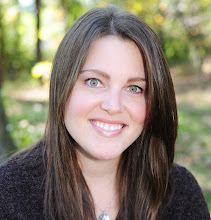Luckily I know my kids (who are now 6 and 4 years old) and their stages of development well enough to know that they just needed to be left to their own devices. They were bored because their need for creativity had been muffled by atypical, holiday fun. Sometimes parents need to take a step back.
With infants and toddlers however, more often than not, parents need to stay involved. From birth to age three, child brain development is occurring rapidly. It's pivotal that parents foster experiences that capitalize on this exciting time in their tiny minds. Nature and nurture work together to shape a child's brain, as genetic predispositions interact with a child's daily experiences and exposures to influence cognitive capacities. In other words, kids are born with aptitudes that may flourish or fade based on his or her mental stimulation.
Neural connections are formed when babies are exposed to sensory stimulation: sight, touch, hearing, taste, and smell. As your infant grows into a toddler, the latter two will take on more importance. But in the beginning, parents can provide opportunities for their little ones that include sight, touch, and hearing.
Sight
From early infancy, allow others to hold your baby for extended periods of time. While nursing or feeding, a baby will stare at mom's face, which aids in bonding and attachment. But make sure she sets her gaze upon others too: dad, grandma, big sister, etc. Not only will this begin to build baby's trust and comfortability with additional caregivers, it will provide her with the chance to study new faces, hear new voices, and feel new embraces.
As baby develops, it's important to vary his exposure to different visual stimuli that are bold, bright, and colorful. During tummy time, while laying or sitting assisted, looking up at a crib mobile, playing under or on an activity mat, going for a stroll in the neighborhood, looking at a mirror. Mix things up so that your tiny tot isn't always looking at the same thing. (And remember to be a Narrative Parent -- as you expose your baby to new things, talk about what he's seeing. "See the doggie. Dog. Dogs say "woof, woof.")
Touch
Between 3 and 4 months of age, babies begin to reach for and grab objects. So be sure to put plenty of safe objects in their reach. Soft toys and rattles, infant keys, teethers. Vary textures and temperatures, describing them as you go. Help her pet the cat (soft) or touch daddy's 5 o'clock shadow (scratchy); place his hand on your water bottle (cold) or coffee mug (warm). This is also a good way to introduce opposites and increase your child's vocabulary. As a bonus, touch introduces cause and effect. For instance, offer toys with buttons that light up or play music.
Hearing
To aid in a baby's understanding and production of spoken words, he needs to be spoken to. A lot. Talk to your baby and give him time to respond with a coo or smile. Read to your baby or toddler daily. Sing songs. Play patty-cake. Play music. Offer musical toys (or a recycled plastic bottle filled halfway with dried beans for the baby to shake). "Toys" don't need to be elaborate or expensive. And don't forget that it's important to fill baby's ears with pleasant, interesting sounds. Be mindful of sounds that may elicit adverse affects, such as yelling or arguing.
Thought for today: If you have or regularly interact with a little one, take inventory of baby's sensory stimuli. What can you do to promote sight, touch, hearing, smell, and taste?
Practicing What I Preach: In March, I became a proud, first-time aunt (not once, but twice) of a niece and nephew as both sisters-in-law gave birth one day apart. It is wonderful to have little ones around again! A week ago, my husband's family was in from out-of-state, giving me a reason to dust off more baby toys as I introduced them to my nephew. His favorite? Sitting up in the Bumbo and playing with a rattle that I attached to the lap tray. This new experience allowed him to (1) sit up assisted, which employs new muscles and offers new views of his surroundings, and (2) to touch a "new" toy, which demonstrated cause and effect as he spun, shook, and pulled it.
Early attempt at being Fun Aunt Nichole was a success. :)








No comments:
Post a Comment